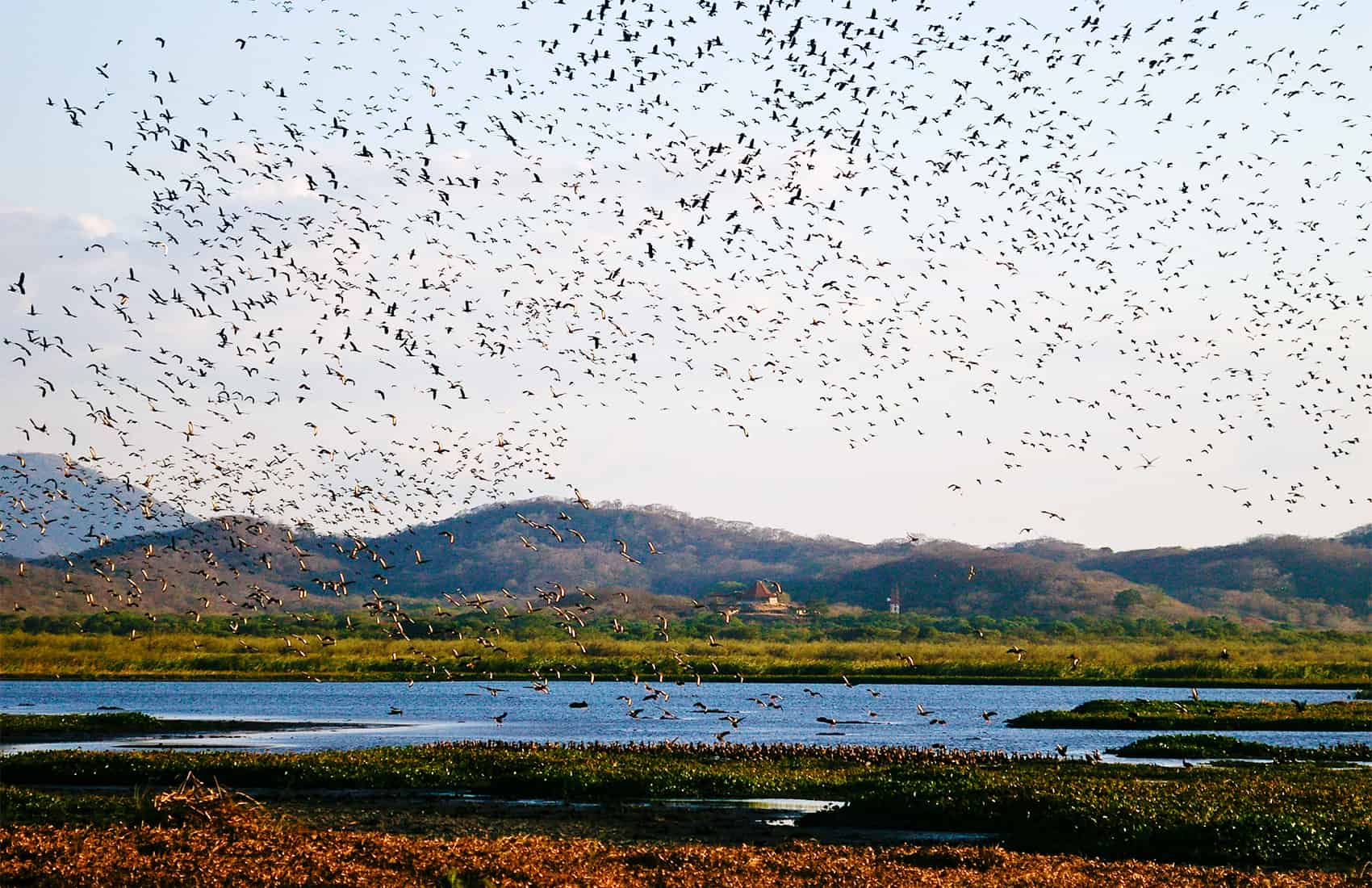President Luis Guillermo Solís and other government officials have officially launched the new National Wetlands Policy, a road map to the preservation of Costa Rica’s more than 2,000 water sources and reservoirs.
At a signing ceremony held on Monday at Casa Presidencial, environment officials said they have already started working on some of the plan’s actions including a National Wetland Inventory, a project to compile an updated list of all water sources in the country.
The plan, for the first time, proposes measures to protect wetlands at risk and to rehabilitate those facing deterioration. The document outlines tasks, goals and responsibilities distributed among various ministries and public agencies. Various non-govermental organizations also are part of the plan’s goals.
Environment Minister Édgar Gutiérrez said the plan will help the government improve the supervision and protection of all the country’s bodies of water. The plan focuses on five main areas: conservation, climate adaptation, ecological rehabilitation, strengthening of environmental agencies and inclusive participation. The last area is designed to involve indigenous people and residents of rural communities in the decision-making process.
Essential ecosystems
The drafting of the government’s plan took almost two years. The final document lists a series of actions to mitigate and adapt to the effects of climate change on Costa Rica’s ecosystems, particularly on wetlands.
Measures aim at protecting ecosystems in rivers, creeks, lakes and lagoons, as well as marshes, flood plains, mangroves, coral reefs, the seabed and marine waters.
Wetlands represent nearly seven percent of Costa Rican territory. All these natural water reservoirs are key to counteracting the effects of climate change here, Gutiérrez said. They also provide food, fresh water, fiber, biochemicals and genetic materials.
“Wetlands also fulfill recreational, aesthetic, educational and spiritual functions that are part of our culture,” the minister said.
The plan also involves a promotion strategy, including some informative videos that will air in coming days.
Watch one of the videos about Palo Verde, one of Costa Rica’s most famous wetlands (in Spanish):
More needed
President Solís highlighted the importance of the new plan, but stressed that the country will need a intense effort to turn the plan into concrete actions.
Solís said that despite Costa Rica’s successful actions regarding conservation, protected lands are still in a very vulnerable situation due to a lack of resources.
Among others challenges, the president acknowledged that there are not enough park rangers and that current guards don’t have appropriate or sufficient resources.
Alice Shackelford, resident representative of the United Nations Development Programme, said at the event that the government’s plan is critical for highlighting the role of wetlands in Costa Rica’s sustainable development ,as well as their importance for women, children, Afro-descendants, indigenous people, coastal communities and other groups.
The Costa Rican Federation for Environmental Conservation (FECON), in a written response, was less optimistic about the government’s plan. The group’s president, Mauricio Álvarez, said that “what the country needs is actions and not words.”
He noted that in August 2016, the administration of President Solís approved Executive Decree #39838, which allows the Environment Ministry to authorize intervention inside wetlands “for repairing, constructing or expanding infrastructure.”
Álvarez said that the decree would primarily benefit private contractors by allowing them to build and expand public roads and other projects that would pass through protected areas.






